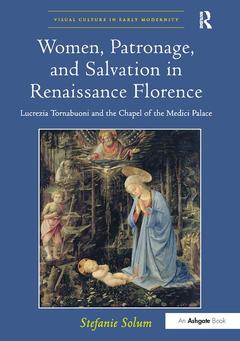Description
Women, Patronage, and Salvation in Renaissance Florence
Lucrezia Tornabuoni and the Chapel of the Medici Palace
Visual Culture in Early Modernity Series
Author: Solum Stefanie
Language: English
Keywords
Christ Child; Lippi’s Painting; lucrezia; Lucrezia Tornabuoni; tornabuoni; Child Baptist; lippis; Biblioteca Nazionale Centrale; painting; Young Man; palace; Peruzzi Chapel; chapel; Vine Stem; child; Staatliche Museen; baptist; Benozzo Gozzoli; medici; Baptistery Doors; biblioteca; Santi Padri; Young Saint; Portable Altar; Palace Chapel; Holy Mountain; Sacra Conversazione; Baptist’s Life; Medici Chapel; Feo Belcari; Female Patronage; Giotto; Giotto Di Bondone; Umiliana Dei Cerchi; Santa Maria Nuova
Publication date: 09-2020
· 17.4x24.6 cm · Paperback
Publication date: 01-2015
· 17.4x24.6 cm · Hardback
Description
/li>Contents
/li>Biography
/li>




